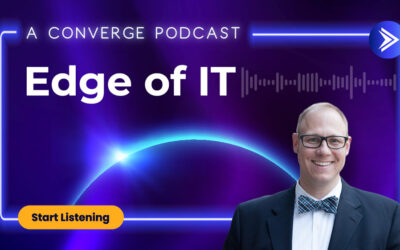Deployments are critical to any successful digital transformation. They can also be the most costly and time-consuming phase.
When work changed overnight in March 2020 due to the COVID-19 pandemic, many organizations had to rethink their long-established deployment processes. The shift to remote and hybrid work has made ensuring successful deployments through traditional means next to impossible.
For many, this was an opportunity to explore tools explicitly designed to address challenges with deploying to a distributed workforce.
It quickly became apparent that deployments for the Modern Workplace are better. Here is why?
They save time and money
The ‘on-premises’ process for devices in larger organizations typically involves:
- Shipping all the devices to a central location
- Removing devices from their packaging
- Creating an image and copying that image onto each device
- Repackaging the devices
- Shipping or delivering the devices to the end-user
- Providing onsite installation and configuration services
That all takes a lot of time, labor, and packaging.
Innovative deployment and remote management technology have made all this possible without an IT team member touching the end-user device. In a Modern Workplace, the process looks a little more like this:
- The device is shipped directly from the seller to the employee’s home or office
- The employee takes it out of the box and connects to the internet, and authenticates
- Everything else happens in the background
Organizations using Zero Touch solutions like Microsoft Autopilot have stated that they save 4 hours per device on average. 1 Scale over hundreds or thousands of devices, and the cost savings in labor alone are hard to ignore.
Devices can be shipped directly to the employee and are ready to go right out of the box
Because no manual configuration is required, devices can be shipped directly from the seller to the employee. This is effective on many levels.
New devices can make it into the hands of employees faster. The device’s integrity is also better protected because fewer people are handling it. Time and energy spent doing things like taking devices out of boxes and repackaging them can now be redirected towards more innovative pursuits.
Online or phone support may be required to overcome initial connectivity and authentication challenges. However, from the employee’s perspective, devices are ready to go from being taken out of the box.
For example, every Surface device comes equipped with the Microsoft collaboration and productivity tools workers already use. Teams, SharePoint, Outlook, and OneDrive, do not need to be ‘Installed’.
Combine this with responsive tech support and deployment solutions—like Windows Autopilot, VMware Workspace ONE and Ninja One—and the entire process can be seamless.

Improved data security during employee transfers
Because technology is so integral to everything workers do, the ability to respond to rapid growth, attrition, and other workforce changes is partly predicated on how quickly deployments could be completed.
It is not just when an employee arrives that modern deployment solutions are practical. Having the same level of control for departures is essential too. For example, it can be imperative to quickly deactivate or disable a device if an employee is fired and poses a security risk.
Not only could devices be deactivated or disabled remotely and instantly, but they can also be redeployed in “business ready” mode to another employee without being touched by a member of your IT team.
Access to unified endpoint management systems
Unified endpoint management systems are crucial to the modern workplace. They allow all devices to be managed and secured remotely from one central location.
That includes:
- Automating patch management
- Deploying new software in a few clicks
- Troubleshooting systems remotely and securely
- Managing and monitoring mobile devices
- Imaging and deploying operating systems
- Automating endpoint security and control
- Managing endpoints on the go using our mobile app
One of the most popular endpoint management systems is Microsoft Endpoint Manager. It serves as a hub where IT teams can access services like Microsoft Intune and Configuration Manager to deploy, configure, update, secure, and manage devices from a single workstation.
Other considerations
While powerful tools exist to overcome the challenges of deployments in a remote or hybrid environment, there are many logistical, configuration, and delivery to keep in mind.
For example, employees may not all have the same comfort level with technology. Connectivity, especially in more remote regions, continues to be an issue. Procuring thousands of devices at once and ensuring each is delivered to the correct address required extensive logistical support.
These are all matters that our Modern Workplace experts can help your team navigate.
To learn more about the Modern Workplace:
Explore our comprehensive Modern Workplace solutions.
Contact a Converge Modern Workplace expert.
1 Forrester Total Economic Impact Study: Maximizing your ROI from Microsoft 365 Enterprise with Microsoft Surface




